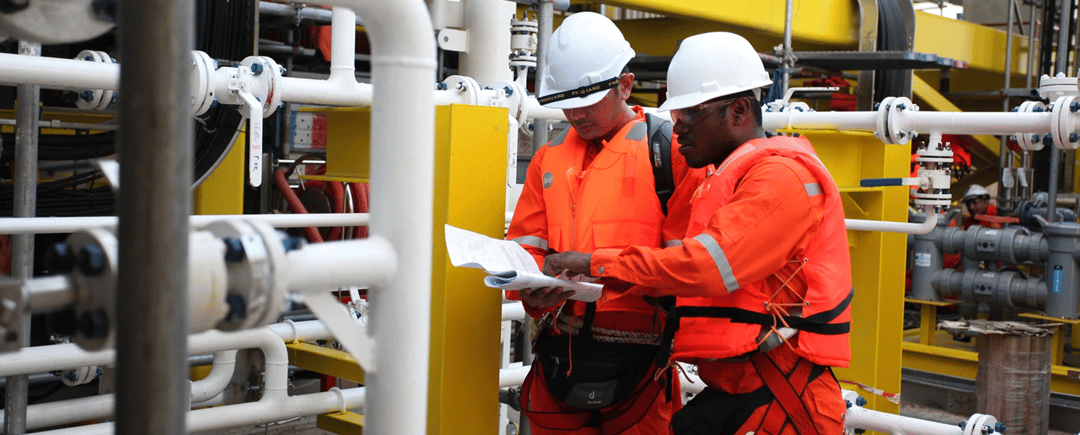It’s the dream of every health and safety manager to have zero injuries. In harsh and sometimes unpredictable conditions, what your workers wear can make the difference between staying safe and getting hurt. Minimize the number of injuries on your watch with eight concrete ways to help build a strong safety culture.
#1. Show that safety is in everyone’s interest
If an operator hasn’t correctly closed his coverall and becomes injured, there’s much more at stake. An accident doesn’t just cause physical harm to one individual — the whole company can take a financial hit, not to mention the impact on your reputation, employer branding (ability to attract new hires), and future business opportunities. Everyone at your company should invest in best safety practices, no matter the team or department.
#2. Be transparent about accident numbers
The more specific you can get, the more real safety becomes. Some companies openly post the number of accident free days for everyone to see outside their facilities. Create an incentive for workers to wear their protective clothing correctly by tapping into company pride. Celebrate your wins! Visible goals will always be more motivating.
#3. Build an emotional commitment
Help your workers find intrinsic motivation with an emotional angle to safety. For instance, remind your workers to promise their families each morning that they’ll return home safe that night. Wearing protective clothing the right way helps them fulfill their promise to their loved ones.
#4. Focus on the wearer's needs
Take stock of your wearer's current needs instead of basing a new protective clothing selection process on technical specs needed in the past (i.e. look for attractive, breathable garments they can move comfortably in). If you allow your workers to voice their preferences early in the selection process, they are more likely to wear their protective clothing moving forward. Creating wearer buy in is key to moving toward zero injuries.
#5. Take every opportunity to educate
Perhaps your company organizes a yearly Safety Day campaign, or maybe you share best practices during quarterly meetings. Either way, experience shows that the key to making safety education stick is repetition — the more often, the better! Try implementing a daily standup meeting with your team, and always include a point on safety to keep it top of mind throughout the day ahead. It’s their life they’re putting in danger when they choose not to wear protective clothing correctly.
#6. Create a safe space for feedback
A daily standup meeting is also the perfect place to cement openness into your safety culture. Why don’t people wear their protective clothing correctly? Because it’s hot, heavy, or uncomfortable. But how often is this kind of honest feedback from your workers welcomed? Open the floor for them to raise any potential issues preventing them from working comfortably, and show them that you value their insights.
.png?width=640&name=Untitled%20design%20(4).png)
#7. Help workers understand their gear
Take the time to visit each department and clearly explain the features and benefits of new garments when you roll out a new range of protective clothing. For instance, a welder may not feel safe wearing a lightweight FR (flame resistant) jacket if they have previously always worn heavy garments made from traditional solutions. Workers will only wear new gear confidently if they understand how it protects them.
#8. Cultivate collective behavior and responsibility
Self preservation is a basic human instinct, but team thinking is ultimately the only way to work towards a zero accident workplace. Encourage your workers to look out for each other and challenge each other to say something if they see that a rule isn’t being followed. Keeping everyone safe means keeping yourself safe, and vice versa.
A zero injury workplace starts here.
It all comes down to helping your workers feel invested in their own safety and the safety of others around them. Make the effort to build a high level of awareness on how to correctly wear and take care of their protective clothing, and involve them every step of the way by keeping their needs central. Then get ready to see your strong safety culture reflect fewer injuries.





.png?width=399&name=Untitled%20design%20(40).png)


